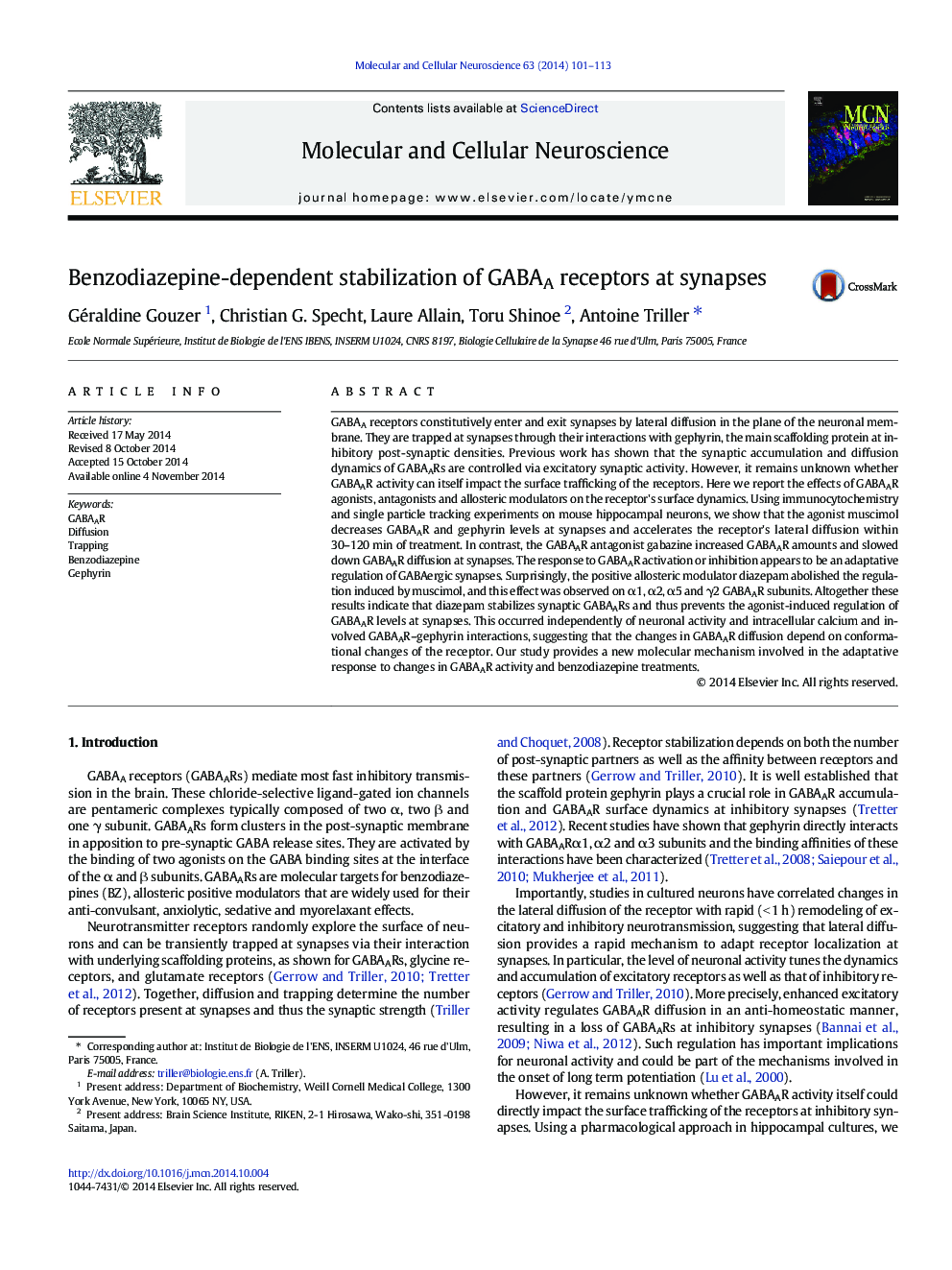| Article ID | Journal | Published Year | Pages | File Type |
|---|---|---|---|---|
| 2198463 | Molecular and Cellular Neuroscience | 2014 | 13 Pages |
•GABAAR agonist muscimol destabilizes GABAARs at inhibitory synapses.•GABAAR antagonists have the opposite effect.•Diazepam stabilizes GABAARs at synapses, thereby preventing the agonist effects.•Muscimol and diazepam effects do not depend on neuronal activity and Ca2 + signaling.•Diazepam has receptor-autonomous effects that rely on receptor–scaffold interactions.
GABAA receptors constitutively enter and exit synapses by lateral diffusion in the plane of the neuronal membrane. They are trapped at synapses through their interactions with gephyrin, the main scaffolding protein at inhibitory post-synaptic densities. Previous work has shown that the synaptic accumulation and diffusion dynamics of GABAARs are controlled via excitatory synaptic activity. However, it remains unknown whether GABAAR activity can itself impact the surface trafficking of the receptors. Here we report the effects of GABAAR agonists, antagonists and allosteric modulators on the receptor's surface dynamics. Using immunocytochemistry and single particle tracking experiments on mouse hippocampal neurons, we show that the agonist muscimol decreases GABAAR and gephyrin levels at synapses and accelerates the receptor's lateral diffusion within 30–120 min of treatment. In contrast, the GABAAR antagonist gabazine increased GABAAR amounts and slowed down GABAAR diffusion at synapses. The response to GABAAR activation or inhibition appears to be an adaptative regulation of GABAergic synapses. Surprisingly, the positive allosteric modulator diazepam abolished the regulation induced by muscimol, and this effect was observed on α1, α2, α5 and γ2 GABAAR subunits. Altogether these results indicate that diazepam stabilizes synaptic GABAARs and thus prevents the agonist-induced regulation of GABAAR levels at synapses. This occurred independently of neuronal activity and intracellular calcium and involved GABAAR–gephyrin interactions, suggesting that the changes in GABAAR diffusion depend on conformational changes of the receptor. Our study provides a new molecular mechanism involved in the adaptative response to changes in GABAAR activity and benzodiazepine treatments.
